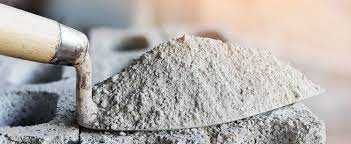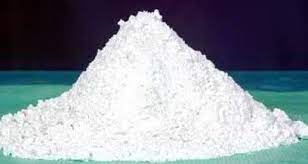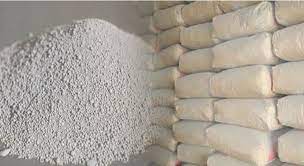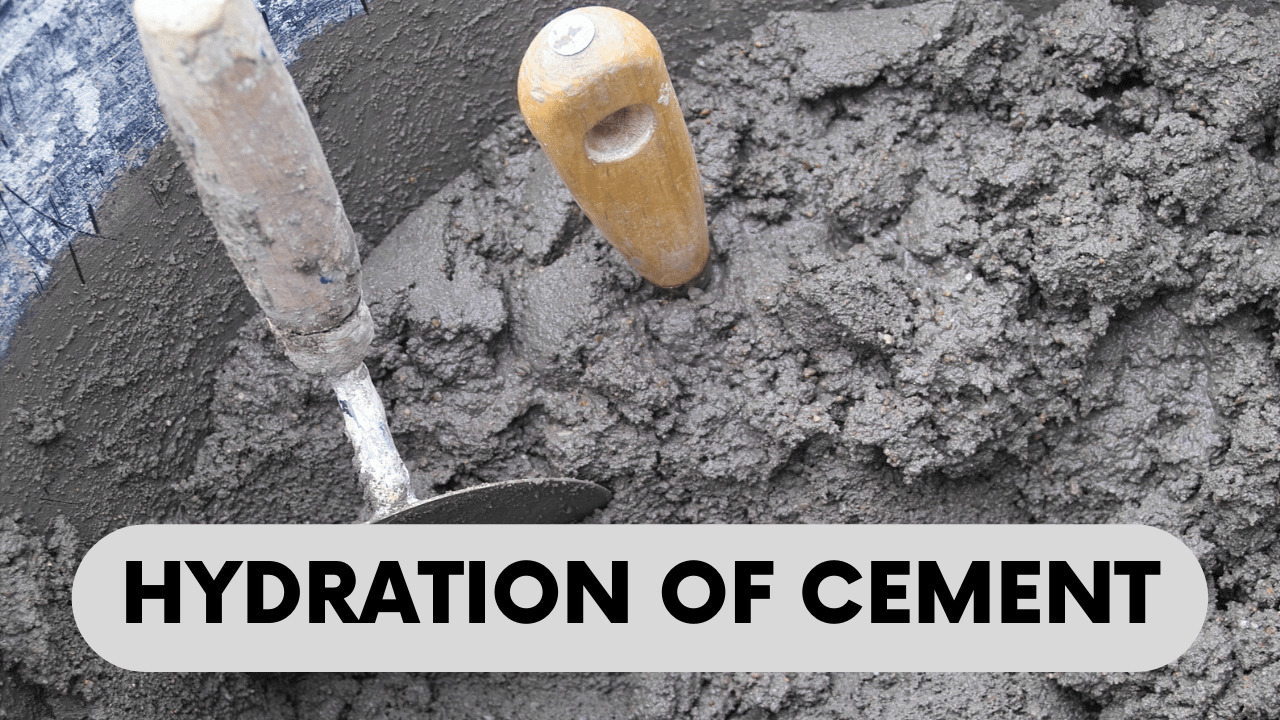In ordinary construction works where the environmental factors and site parameters do not constrain or assail the performance of concrete greatly, the use of ordinary Portland cement is a facile win. However, even a design engineer is not starkly certain of the environmental permutations that may affect the structure in its design life. It is henceforth, imperative to inspect the site conditions and speculate the anticipated performance of the structure.
This also serves as a factor of safety against unforeseen eccentricities on site. Therefore, modification of concrete properties, as well as its performance, becomes essential in such cases. A possible way to achieve this is by using different cement types available in the market that serve various purposes aptly.
It is needless to mention that the overall strength of concrete composite largely hinges on the binding ability of cement and how it reacts with water. Hence, playing with the properties of cement conclusively alters the performance of concrete. The clause “modification of cement properties” can broadly refer to either a variation in the proportions of the core constituents of cement or an altogether replacement of a few of them.
The American Standard for Testing and Materials has grouped 5 cement types as ASTM types of cements. Apart from these, a few special cements cater to some other desired features. The details are given as follows;
Table of Contents
ASTM Types of Cement
This group includes 5 unique cement types that vary depending upon the relative proportions of different ingredients as well as the rate of strength development. The details are provided below.
1)ASTM Type-I Cement (Ordinary Portland Cement, OPC):
It is the most commonly used cement for ordinary construction works. From making cement mortar to plain or reinforced cement concrete, OPC panders to all the general concreting operations where the soil conditions are normal, the concrete is not susceptible to the attack of sulphates, and the liberated heat of hydration is speculated to be within the permissible limits.
2)ASTM Type-II Cement (Modified Portland Cement):
In areas where the sulphate concentration in the soil or ground is anticipated to be a little high, the use of modified Portland cement proves advantageous. This is because this cement has a better resistance to sulphate attacks that may leave a concrete structure lurching from one crisis to another.
In addition, modified Portland cement undergoes the hydration process at slower rates than OPC. Hence, for massive (large volume) concrete structures, using this cement will dwindle the temperature surge when concreting is done in hot, dry weather.
3)ASTM Type-III Cement (High Early Strength Cement):
When higher strength is required in a relatively short period of time, high early strength cement is good to go with. It proves particularly worthwhile when it is required to remove the formwork as soon as viable to bring the structure into service. Moreover, the high early strength feature makes it possible to reduce the duration of concrete works during cold weather.
4)ASTM Type-IV Cement (Low Heat of Hydration Cement):
In this cement type, the hydration process proceeds at a slower rate, thereby decreasing the amount of heat evolved at any instant of time. It can be used in massive concrete structures such as dams where the temperature hike during the hydration process is a critical parameter to be considered.
5)ASTM Type-V Cement (Sulphate Resistant Cement):
For structures vulnerable to attack by sulphates, this type of cement caters to all the environmental caveats and is conspicuously the best choice. Sulphates present in the soil or groundwater may attack a concrete structure over time. However, using this cement, the structure concurs to resisting the sulphate attack as well as the seawater (containing salts and minerals).
As per the standard, the above 5 different types of cement show variable rates of strength development. The following tabular data drafts a contrast between the strength gain of ordinary Portland cement and the other 4 types, taking the former as a basis for comparison.
Table: Comparison of Rate of Strength Gain of various ASTM cements with reference to Type-I Cement
| ASTM Type of Cement | Strength Comparison at different ages | |||
| 1 Day | 7 Days | 28 Days | 90 Days | |
| Type-I | 100% | 100% | 100% | 100% |
| Type-II | 75% | 85% | 90% | 100% |
| Type-III | 190% | 120% | 110% | 100% |
| Type-IV | 55% | 55% | 65% | 100% |
| Type-V | 65% | 75% | 85% | 100% |
Source: ASTM Standard
Considering the chemical composition of the above cement types, it is evident that they all possess a variable matrix of proportions of ingredients, percentage of heat evolved during hydration, and the fineness. The following table summarizes the same.
| ASTM Type of Cement | Percentage Composition (%) | Heat Generated | Fineness | |||
| C3S | C2S | C3A | C4AF | (%) | (%) | |
| Type-I | 50 | 24 | 11 | 8 | 100 | 1800 |
| Type-II | 42 | 33 | 5 | 13 | 80-85 | 1800 |
| Type-III | 60 | 13 | 9 | 8 | Up to 150 | 2600 |
| Type-IV | 26 | 50 | 5 | 12 | 40-60 | 1900 |
| Type-V | 40 | 40 | 4 | 9 | 60-75 | 1900 |
Source: ASTM Standard
Special Cements
These cements have special properties that they impart to the paste on reaction with water. This category entails the following types:
1)Rapid Hardening Cement:
As the name suggests, this type of cement develops strength at a faster rate than OPC. As an approximation, the three-day compressive strength of such cement is equal to the seven-day strength of OPC, keeping constant the water to cement ratio.
The incessant strength gain becomes possible owing to the presence of higher contents of C3A, which propels the hydration process of cement. This type of cement can be used in low-temperature areas, where frost damage tends to fray the hardened concrete.
2)Extra-Rapid Hardening Cement:
This cement is a step-ahead modification of rapid hardening cement and is prepared by grinding and mixing calcium chloride (less than 2%) with the same. The extra-rapid high strength development makes its use beneficial for cold weather concreting.
Nevertheless, it is never recommended to use this cement with reinforcing steel. It is also to be kept in mind that owing to rapid hardening, the setting time of this cement is quite less, and the finishing and placing operations are ought to be carried out at the earliest.
3)Ultra-High Early Strength Cement:
This cement does not contain any admixture, and hence, its use in reinforced and prestressed concrete is quite appropriate. The high early strength development is due to the high fineness of the cement, which results when the gypsum percentage in the cement is augmented.
This cement is prepared by separating fines from rapid hardening cement. However, a disadvantage of using it is that it degrades rapidly on exposure to air.
4)White Portland Cement:
It resembles OPC except in color. It is made from selected ingredients that contain a subsidiary amount of iron and magnesium oxide. In addition, the manufacturing process is controlled in such a way that a non-staining, white cement is the final product. This type is useful for architectural works, decorative concrete, tile grout, etc.
5)Masonry Cement:
This type is exclusively dedicated to making better mortar in terms of plasticity, workability, adhesion, and bond than that made with OPC. It is prepared by grinding OPC clinkers with high-calcium limestone. To this powdered product, a plasticizing agent, an air-entraining agent, and a set retarder are added.
6)Colored Portland Cement:
In order to impart some color to the cement paste, some coloring pigments are added to the cement. However, the strength of such cement is relatively less than OPC.
7)Hydrophobic Cement:
Hydrophobic cements have a lesser affinity for water and can ease the storage of cement under unfavorable conditions. To prepare this cement, OPC is grinded with 0.1-0.4% oleic acid, stearic acid, or pentachlorophenol. The hydrophobic behavior of such cement is pertinent to the formation of water-repellant films around cement particles.
During the mixing of concrete, the normal hydration process takes place and the films get stripped off. However, the early strength shows a decline in magnitude.
8)Slag Cement:
It is prepared by adding 35% blast furnace slag to the OPC clinkers. This is followed by grinding that yields the final product. This cement undergoes the hydration process accompanied by a relatively lesser amount of heat exhaust., and this makes its use in massive structures rewarding, however, when subject to cold weather, the performance of such cement is unsatisfactory.
9)Waterproof Cement:
It is produced by adding a scant amount of a stearate (calcium or aluminium, in general) to the cement during the final grinding process. The waterproofing property of such a cement signifies its resistance to penetration of a liquid, and this defiance is more than that offered by OPC.










